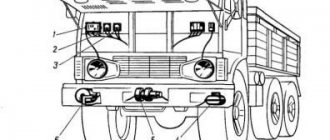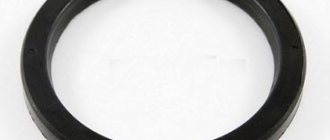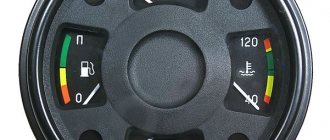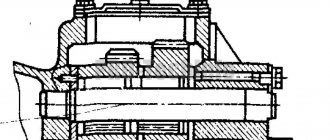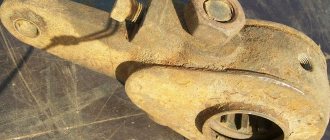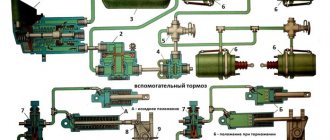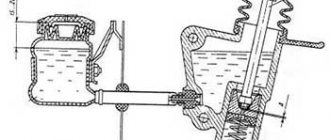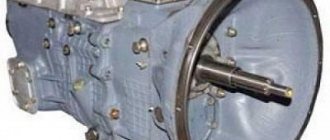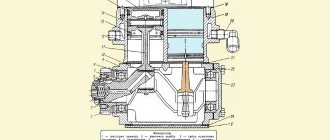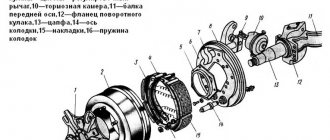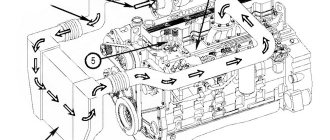Question answer
Axial piston pumps belong to the most popular family of hydraulic pumps – rotary piston machines.
These types of pumps are represented in hydraulic systems by the largest number of possible designs and are the most popular hydraulic pumps. Their main advantages are high efficiency (high power density), the ability to operate at pressures up to 70 atmospheres and relative simplicity of design. Disadvantages are significant output pressure pulsation and high (compared to other types of pumps) cost. Gear pumps are cheap, simple and compact. The level of pulsations is small, but, unfortunately, their efficiency and service life are lower than those of axial piston ones, and the upper pressure limit does not exceed 20 atmospheres. It is this type of pump that is most often used on various auxiliary devices of vehicles. The body lowers arbitrarily when the rods are extended. Why? First of all, we would recommend checking the pressure distribution valve. Experience shows that in approximately 87% of cases it is its malfunction that leads to a similar result. What is the difference between a gear hydraulic pump and an axial piston pump?
The answer is simple - the type (design) of the liquid displacement mechanism. In other words, what tools do they use to create their excess pressure? In a gear pump, the pressure is generated by a pair of gears that are in mesh (external or internal), while in axial piston pumps this is done by pistons or plungers.
When fully loaded, the dump truck lifts only two rods. Why? There may be several reasons: 1 Insufficient pressure in the vehicle’s hydraulic system. Pressure is checked at service centers for the repair and maintenance of hydraulic equipment. As a rule, the pressure in the vehicle's hydraulic system corresponds to the maximum pressure indicated on the body lift cylinder. If the pressure values do not match, adjust the safety valve to the desired value. 2 The hydraulic pump does not produce the nominal pressure, in this case the pump needs to be replaced. 3 The most common case is overload. During the unloading process, the maximum pressure is reached in the hydraulic cylinder to which the safety valve is set and all the oil goes through this valve into the tank. Interested in whether you have a service center in the Khanty-Mansiysk Autonomous Okrug? section “About the company” item “Dealer network” contains the addresses and telephone numbers of all our partners and representatives. If you have not found a representative in your region, call the toll-free line 8-800-200-16-12. At the beginning of the working day, the body on the dump truck rises slowly, and then it seems to warm up and work normally. 1 Check the hydraulic oil for thickening; it may not correspond to the temperature conditions. 2 Check the stroke of the spool on the distributor; there may be ice on the outer part of the spool or the surface is very dirty. clean off ice and dirt and check the valve stroke. 3 insufficient pressure in the pneumatic system of the “Lifting” - “Lowering” control of the body. The air pressure in the pneumatic tubes suitable for the distribution valve must be at least 6 kg/cm2, 6 bar. 4 Check the oil valve on the hydraulic tank; it must be completely open. The first rod does not go down all the way. As a rule, this happens when the first (largest) rod is deformed. Deformation occurs at the location where the locking ring is installed, as a result of high pressure in the hydraulic system, or the rod is bent when unloading on an uneven platform. Measure the pressure, section to be replaced. When idle in the box, the body lifts. I went on a flight and it doesn’t get up. 1 check the level of hydraulic oil in the tank and check the valve on the tank, it should be in the “open” position 2 check whether air flows to the power take-off switch on 3 check whether air flows to the distributor when the joystick is in the “raise” “lower” position in the driver’s cabin 4 check the body lift limiter for the stroke of the spool, if there is one, 5 check and tighten the quick-release coupling of the hydraulic valve that goes from the tractor to the semi-trailer. 6 check the full stroke of the spool on the distributor. Hydraulic fluid is leaking from the top of the lift! most likely the sealing collars on the hydraulic cylinder are worn out (possibly due to scuffing on the working surface of the cylinder rods. The body lowers slowly, but unloads normally. 1 Pay attention to the oil filter in the tank. If it is clogged, you will have to replace it. Try to change the filter every six months 2 insufficient air pressure in the pneumatic control in the “lowering” position 3 not full stroke of the spool in the distributor in the “lowering” position, clean the spool from dirt 4 check whether the quick-release connections are completely screwed in. 5 with the body completely lowered and the pump turned off, connect the high pressure valve to the cylinder without quick release coupling, if the body begins to lower quickly, it means replacing the coupling (quick-release coupling) 6 if a hose break valve is installed on the cylinder, this may be the reason. The body either rises to the end or lowers. There is no intermediate fixation. (A.P. Pimenov, g .Samara) Dear Alexey Petrovich! Dirt or debris has gotten under the check valve on the distributor. The pressure limiting valve on the distributor is faulty. There may be a constant supply of air from the joystick in the cabin, to determine, pull out the pneumatic tubes one by one from the fittings in the distributor, with the joystick in neutral position pneumatic control. Most likely the distributor needs to be replaced. Why does the cylinder move jerkily? Remove air from the hydraulic system. Check the serviceability of the hydraulic pump. The body does not lower. There are several reasons. Eliminate the simplest one first - loosen the PCO screw. The cause may also be oil (thick?), as well as a clogged return filter. Serious breakdowns: malfunction of the pneumatic valve pusher or pneumatics. The pump does not turn on, and as a result, the body does not rise. Is the problem with the pump not delivering oil? (Leonid) Not only in him. Check whether the PTO is engaged and the pressure in the lift valve. Air is leaking from the distributor tube on the hydraulic tank. Eliminate a malfunction of the pneumatic control joystick. How can I purchase a single-circuit hydrofication kit from you? I'm interested in the standard one. Write the model and make of your vehicle. Please check whether you have a power box installed and how you plan to install the tank - on the frame or in the cab. Instead of lifting the body - a whistle. (Rinat) Tighten the quick-release coupling. It didn’t help - the problem is in the bypass valve. The replacement claims that there is nothing better than Shell Tellus T 32 oil. It seems to me that something better could be chosen for Scania. What do you think? (Boris Vladimirovich, Norilsk.) Your replacement is partly right, Boris Vladimirovich. But as an option, in your climate zone you can use SHELL TELLUS Arctic 32 hydraulic oil. Is it possible to hydraulically equip my car for TONAR? I'm interested in model 97461 with movable floors. I have a Volvo 2005. Hydrofication is possible. Most likely you need a 110 l/min piston pump. SOS! A distinct impact is heard when the body is lifted. Moreover, with reverse impact. Then rise again. (A. Egorov, Yaroslavl) Measure your blood pressure urgently. Contact the dealer in your region: phone +7 (485) 269-5252, Yaroslavl, st. Dekabristov, 2 (industrial zone) Today I watched the oil bubble and come out. More like an emulsion. This happens when the body is raised. If it is an emulsion, then perhaps moisture has accumulated in the oil. Check where the oil comes out. What to do? Check if the air filter is clogged. If the body doesn't lift, is it a hydraulic issue? It is quite possible that the pump also burned out. But first, take your blood pressure. It must match what is written on the cylinder nameplate. Doesn’t match - alas, the pump needs to be replaced. I want to use my Volvo dump truck with a trailer. Hydrofication is needed. How long will the work take? (Mikhail Dugin) Hello, Mikhail. Work for the day. The work includes replacing the tank, laying a hydraulic line and installing two valves - a bypass and a diverter. Volvo FM. What oil do you recommend for lifting for a wide range of temperatures? Select oil according to viscosity. It should be 75 mm²/s. This is for low temperatures. For extremely high temperatures, above 65 degrees (not air, but oil!) it is better to use an oil cooler.
How the platform works
The mechanism for lifting it is hydraulic. It covers: power take-off box (PTO); pump; hydraulic distributor; hydraulic cylinder; valve to limit the level of platform lift; pneumatic block; an oil tank having a filter; wires.
To turn on the hydraulic system, which tilts the platform, the clutch is first engaged, then the electric magnet on the pneumatic block that controls the PTO. The air goes to the pneumatic cylinder, which activates the PTO. Immediately after activating the clutch, the pump is activated, the oil goes to the hydraulic distributor, and from there to the drain.
Raising the platform requires activation of an electric magnet that controls the hydraulic distributor. From the pneumatic system, the air mass goes to the pneumatic cylinder located on the hydraulic distributor, shifting the spool to the left position.
Then the drain cavity in the hydraulic distributor is blocked, after which the pressure line is connected to the cylinder line. In the event of a dangerous increase in pressure inside the line, the fuse is activated.
To stop the process of raising the platform, it is necessary to turn off the electric magnet that controls such a unit as the hydraulic distributor section. In this case, the cavity of the distributor pneumatic cylinder is connected to the atmosphere, after which the spring puts the spool in the neutral position.
The hydraulic cylinder line is closed, after which the platform stops in the raised position. There is also a connection between the discharge cavity of the hydraulic cylinder and the drain, while the oil that comes from the functioning pump is drained into the oil tank.
An electric magnet is turned on to lower the platform. At this moment, the air, leaving the pneumatic system, goes inside the other cavity of the pneumatic cylinder of the hydraulic distributor, moving the spool of the latter to the extreme right position and connecting the hydraulic cylinder line and the drain.
After this, the platform is lowered. Immediately upon completion of lowering, the electric magnets (all) must be turned off, while the pneumatic distributor handles are returned to their original position.
Raising and lowering the cab
A pump mounted on the vehicle frame is used to raise and lower the cab Depending on the model and configuration of the vehicle, it is possible to install a tipping pump of various models. The position of the control handle for raising and lowering the cabin is indicated on the plate located on the pump body (see Fig. Plaque options).
During operation, it is necessary to ensure control over the oil level in the hydraulic lift system. The oil level should be between the marks indicated on the pump dipstick mounted in the pump reservoir housing.
Raising the cab to the first position provides access to the engine during its maintenance.
Before raising the cab:
1. The cab tilting area must be free. 2. Brake the car with the parking brake system. 3. Set the gear shift lever to the neutral position (for the ZF 9S1310 gearbox, to the neutral middle position for engaging 3rd and 4th gears). 4. Turn off the additional heating (cabin air heater) or air conditioning. 5. Turn the key of the instrument switch and starter switch to position “0” - “Everything is off”. 6. Lower the steering column to the lower position (to prevent damage to parts of the adjustable steering column with pneumatic control). 7. Secure or remove all loose objects from the cab. Close all doors, drawers and compartments in the cabin. 8. Install wheel chocks to prevent the vehicle from rolling away. 9. Check that the towing forks have been removed. 10. Raise the front trim panel.
Cabin lift
1. Set the control knob on the hydraulic cab lift pump (see Fig. Tilting mechanism pump), depending on its model, to the CAB LIFT or UP ARROW position and, shaking the pump handle with a mounting blade, begin lifting the cab.
Tipping mechanism pump 1 – control handle; 2 – pump handle; 3 – pump probe
2. To prevent accidental lowering of the cab, secure the limiter posts with a locking pin. Remove the locking pin from the transport position (from the hole in the lower pillar) until it touches the upper pillar (see Fig. Cab tilt limiter).
Cabin tilt limiter 1 – upper stand; 2 – lower stand; 3 – locking pin
3. While pumping the pump handle with a mounting blade, continue lifting the cabin until the holes in the lower and upper pillars coincide. If these holes coincide, stop raising the cabin. For cabins with hydraulic locks, the hydraulic locks open automatically when the pump is running. For vehicles equipped with a gearbox with a telescopic drive, the lock of the telescopic elements opens automatically when the cab is raised. 4. Secure the limiter posts with a locking pin to prevent accidental lowering of the cab.
Attention! When the engine is running and the cab is raised, the cooling system fan can be turned on automatically. It is strictly prohibited to carry out any work in the fan area while the engine is running.
Lowering the cab
1. Remove the locking pin. 2. Set the handle on the pump, depending on its model, to the CAB LOWER or DOWN ARROW position and, shaking the pump handle with a mounting blade, begin lowering the cabin. 3. Insert the pin into the transport position into the hole in the lower post of the limiter. 4. Continuing to pump the pump handle with the mounting blade, lower the cabin. When the cab is lowered, the hydraulic locks close automatically and the cab is blocked from tipping over. If at least one of the two hydraulic locks is not closed, the cabin lock indicator light on the instrument panel lights up. For vehicles equipped with a gearbox with a telescopic drive, after lowering the cab, the lock of the telescopic elements must be closed to ensure a rigid connection between the lever and the rod. If the lock does not close, sharply press the gear lever handle forward until the telescope lock closes.
Source: uzst.ru
KAMAZ dump truck platform design
This platform is all-metal and welded, has a canopy for protection, a side at the back that opens, and locks for this side. It is heated by exhaust gases, which helps prevent cargo from freezing in winter.
The equipment includes a platform, a lifting and lowering system, and a subframe. The latter is a welded type device, including 2 spars, a reinforcement, and cross members. The lifting and lowering mechanisms of the platform cover:
- A power take-off box with a pump. They take power from the gearbox.
- The high-pressure pump is gear-type and provides oil flow at a speed of 85 liters per minute and a rotation speed of 1920 rpm.
- Hydraulic cylinder (belongs to the telescopic type and has a one-way action).
- A block by means of which the liquid pressure in the tipping mechanism is controlled, including an electric pneumatic valve and a control valve.
- A valve that limits the level of lifting of the platform, stopping the lifting when it reaches the greatest angle.
- An oil tank made by stamping from 2 halves, having filters, the locations of which are a filler neck with a drain line.
- A stabilizer that holds the platform during unloading, avoiding movement in the transverse direction.
Problem with the KAMAZ body
Is your KAMAZ body hanging up or not rising at all? Contact our service center. Very often the hydraulic system, which is responsible for the body lifting operation, has malfunctions. This problem arises due to the fact that the mechanism responsible for the operation of the body is broken and requires repair. It is a malfunction of the lifting mechanism that can lead to a problem with the body. To do this, you need to contact our repair service center. Our technicians will answer your questions and begin the repair.
Malfunction options and repairs
Our specialists conduct diagnostics before starting repairs.
Particular attention should be paid to the fitting. The cause of the breakdown may be an incompletely drilled hole at the fitting, or the seam blocking it. In this case, the hydraulics can be easily repaired. Before starting work, the craftsmen make a cut at the hole in the body of the body lift cylinder (example KAMAZ 5511), so the body begins to function normally.
Another malfunction may be a broken hydraulic cylinder. Often in this case, the body of the KamAZ 5511, and other models, may not lower or rise. In this case, specialists lower the body and drain the oil from the body lift cylinder. Then inspect the distributor as it often wears out and may burst. The cause is a faulty cuff.
If you notice that the body on your KamAZ does not rise, contact our service center in Krasnodar. We carry out the work after diagnosis. First, let's examine the distribution hose. The problem may also lie in the valve, which is located on the inside. It may be necessary to replace hydraulic cylinders that are worn out. They have a low cost. Replacing them with new ones will not take much time.
Source
To watch online, click on the video ⤵
How the body lift control crane should work on a KAMAZ dump truck Read more
Injection pump, body lowering retarder Read more
How did I make the body rise at idle and not fall? Kamaz 5511 More details
The body does not lower. What to do? More details
Raising/lowering the body on a dump truck Read more
Adjusting the KAMAZ body lift. We carry clay. More details
Hydraulic distributor for lifting the KAMAZ body repair Read more
Installation of KAM-10 in KAMAZ Read more
A small upgrade. Body lift valves, replacing old ones with European ones Read more
Body lowering retarder, continued Read more
Kamaz Review of the shaker! In the common people (shaking) Read more
Shakman f2000, about gearbox and body lift Read more
Gear shift of ZF16, KamAZ-6520 More details
Chips for Kamaz dump truck h 1 Read more
How to choose the right NS pump? Using the example of “flat” and “round” NS. More details
WHAT IS THE REASON . The KAMAZ body lift distributor has FAILED. To be continued . More details
The body on the farm truck does not rise More details
Several reasons why the MAZ body does not rise. More details
KamAZ dump truck. Body lift valve. More details
Source: putinizm.ru
Adjusting the lifting mechanism
Regular checks of the valve and its regulation are necessary. This refers to a valve that limits lifting. Check how securely it is attached to the subframe. The screw must have a lock nut for adjustment, and it must also lock. The valve stem must not be bent
Oil leakage from under the rod seal is also unacceptable, as is leakage through the pipeline. In the case of a correctly adjusted maximum lifting angle of the KAMAZ platform, it is necessary that the pins of its stopper fit freely into the holes located in the brackets that relate to the subframe. You cannot operate a dump truck without violating the regulation of the body lifting angle.
To adjust the lifting angle, first unscrew the locknut from the adjustment screw. Then screw the screw completely into the rod. The platform rises to a position where its locking pins can easily enter the holes in the subframe, and in this position it must be locked using the locking pins.
The adjustment screw is unscrewed from the valve until it rests against the hydraulic cylinder, then it must be locked using a locknut. Then they unlock the platform, lowering it and raising it again. You need to make sure that the lifting stops immediately after the alignment of the pin axes and the holes in the overframe brackets.
When the KAMAZ body does not lift, you should check with your own hands how correctly you lift the platforms, as well as the condition of the hydraulic and pneumatic lines, how much oil is inside the tank, whether the pumps and switches are working properly, how the PTO works, whether there is a power supply.
KamAZ 65115
KamAZ 65115 – photo 1
KamAZ 65115 – photo 2
KamAZ 65115 – photo 3
KamAZ 65115 – photo 4
KamAZ 65115 – photo 5
Malfunction options and repairs
Our specialists conduct diagnostics before starting repairs.
Particular attention should be paid to the fitting. The cause of the breakdown may be an incompletely drilled hole at the fitting, or the seam blocking it. In this case, the hydraulics can be easily repaired. Before starting work, the craftsmen make a cut at the hole in the body of the body lift cylinder (example KAMAZ 5511), so the body begins to function normally.
Another malfunction may be a broken hydraulic cylinder. Often in this case, the body of the KamAZ 5511, and other models, may not lower or rise. In this case, specialists lower the body and drain the oil from the body lift cylinder. Then inspect the distributor as it often wears out and may burst. The cause is a faulty cuff.
If you notice that the body on your KamAZ does not rise, contact our service center in Krasnodar. We carry out the work after diagnosis. First, let's examine the distribution hose. The problem may also lie in the valve, which is located on the inside. It may be necessary to replace hydraulic cylinders that are worn out. They have a low cost. Replacing them with new ones will not take much time.
How to raise the body of a Kamaz truck is one of the most popular questions among drivers. The dump truck body is made in the form of a rising and falling platform; it is controlled not by one button, but by a system of mechanisms. To understand how to lift the body on a Kamaz dump truck, photo above, you need to know the structure of the platform, and how to control these devices, let’s start in order.
